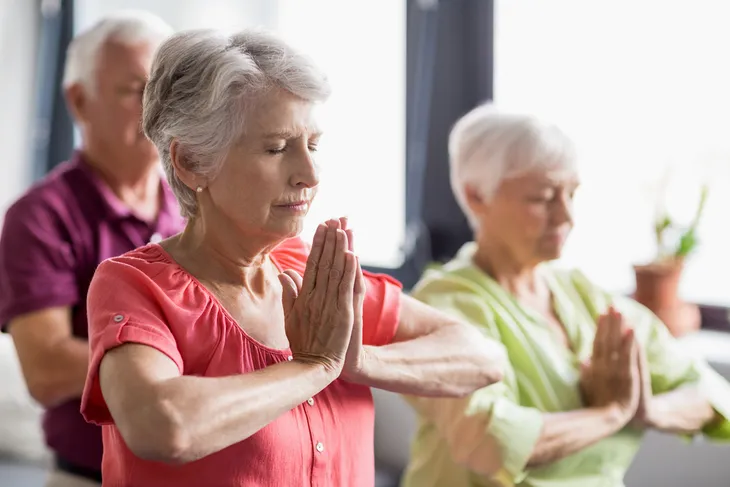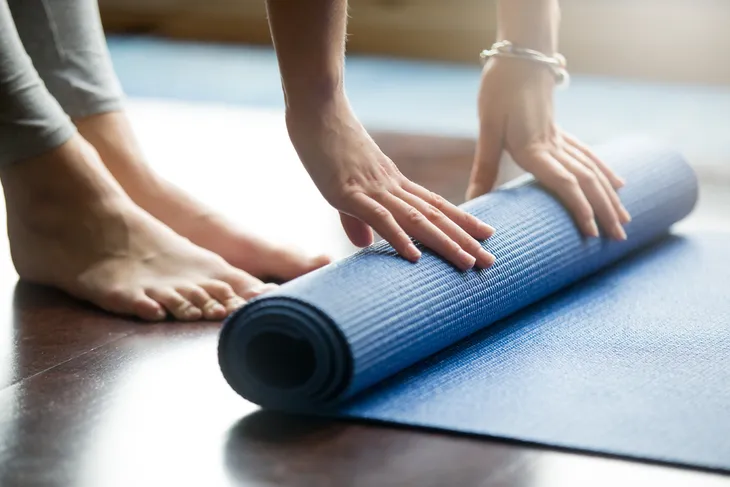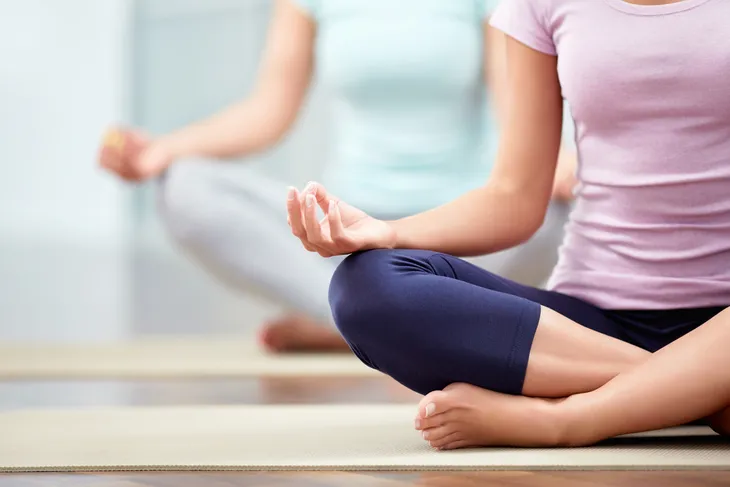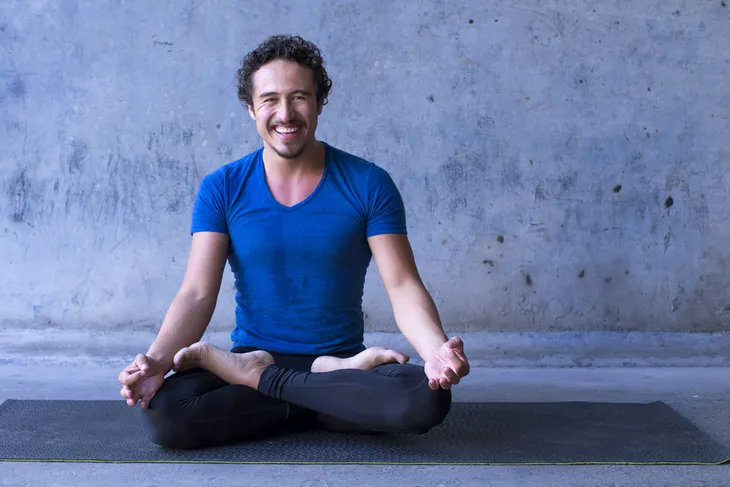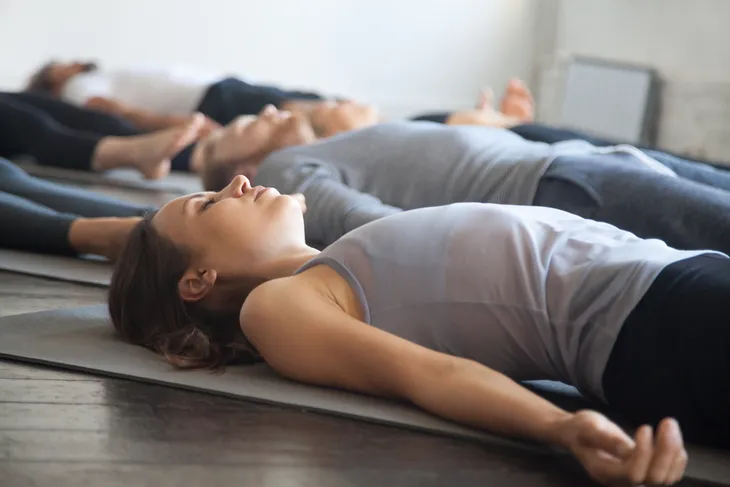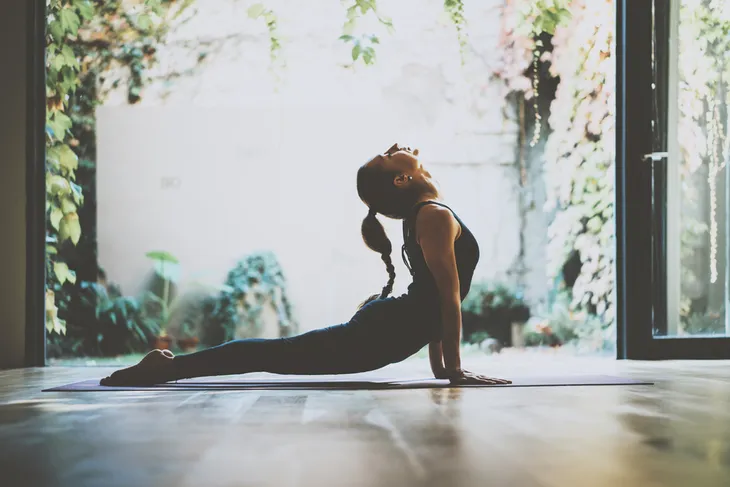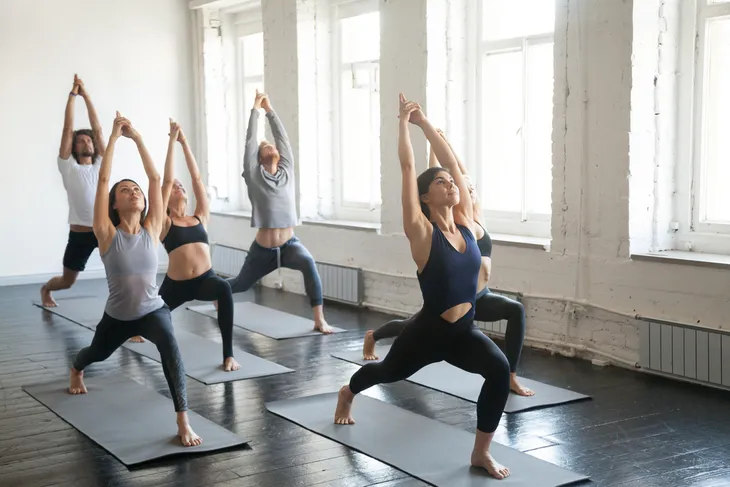I love yoga for so many reasons. For me, I see it as a way to breathe, sweat, and stretch away negativity while connecting my mind with body, and challenging my endurance and flexibility. However, the thing I love most about yoga is that it offers something for everybody. Regardless of your flexibility, age, gender, or body shape, yoga welcomes everyone to the mat, and it offers effective ways to meet a variety of health goals (i.e., stress reduction, weight loss, improving flexibility, strength building, confidence building, and more).
Here are seven reasons why yoga is for everybody and every body…
1. There’s No So-Called “Yoga Body”
So you’re not under 40, a woman, you don’t have a drawer full of Lululemon yoga pants, you aren’t that flexible, and you don’t have a “yoga body”? Hold the front door! There is no such thing as a yoga body.
Try a beginner yoga class and you will soon see that yoga teachers and students are a diverse bunch, and that uniqueness is what makes yoga practice so great. Don’t let yourself miss out on the wonderful impacts of yoga (or anything else) for fear of not fitting in to a mythical stereotype.
2. Yoga is Accessible for Everyone
Yoga is a continuous learning experience. Many who practice it, strive for higher enlightenment, however, it’s about far more than learning a series of poses to perfection. Day to day my yoga practice changes. I continue to need different poses and be challenged by different poses as I grow.
That’s why beginners that come to yoga can be assured that there is no perfect, one-size-fits-all way to practice yoga. This is why teachers offer various modifications (i.e., including tools like bolsters, straps, and blocks) to make yoga accessible for everybody regardless of gender, age, physicality, existing injury, or body shape.
3. We All Need Less Stress
We could all use a little less stress in our lives, regardless of what lifestyle we live. And yoga banishes cortisol, the evil stress hormone that triggers our fight or flight response and causes irritability, sleep loss, emotional negativity, and cravings for unhealthy processed foods.
According to the Mayo Clinic, excess cortisol can cause damage to your mind and body, increasing sugars (glucose) in the bloodstream and causing a viscous cycle of bad health (i.e., digestive ailments, migraines, sleep disorders, anxiety and depression, weight gain, and cardiovascular stress).
4. Yoga Focuses on How You Feel NOT on How You Look
The very reason why yoga is practiced on a single mat is because your yoga practice is all about you not the person falling over during half moon to your left, nor the person twisted into a pretzel on your right. Yoga is a very personal practice, which is why we all come to the mat for different reasons.
Have you ever noticed that most yoga studios don’t have mirrors surrounding the practitioners? That’s because any yoga teacher will tell you that yoga is all about how you feel, not about how you look doing any certain pose. All bodies are different.
5. Everyone Needs Rest and Recovery
I’ve been doing yoga for over 10-years, and I still can’t do every pose to perfection (some I can’t do at all) and I still need to rest and recover following a class. As with any new activity that challenges your body, yoga will cause some muscle pain and discomfort from all of that stretching and holding of poses.
You may very well feel some discomfort in your arms, legs, chest, core, and all over your body the following day, but that pain is a indication of the changes and improvements taking place inside your body. You work hard in a yoga class, give your body the respect and time it deserves to heal (muscles build during rest) to avoid an injury or exercise burn out.
6. Emotional Lessons for All
As you build strength and improve your flexibility with yoga, you’ll also encounter the many emotional benefits that come from a regular yoga practice. As many begin a yoga practice with goals for physical (outward) changes in mind, it’s hard to deny the many positive emotional (or inner) changes also taking place.
For instance, yoga teaches us compassion for our bodies by asking us to tune into our physical cues. Any yoga teacher will tell you, to listen to what your body is telling you. For instance, if you feel pain, stop and rest. If a pose brings up certain feelings, ask yourself why. As we notice our outward transformation, yoga teaches us to respect our bodies, listen to our bodies, and with that comes a newfound positivity as far as where we place our energy, our internal dialogue, what we eat, and how we care for our well-being.
7. Choose Your Yoga Style
Thankfully yoga comes in various styles so you’re likely to find one that suits your goals and your unique abilities. I chose to explore various different yoga styles via YouTube and DVD videos before I ventured out to take classes at a studio.
Yoga, like people, comes in various forms. Hatha yoga is a slower, gentler practice that focuses on breath and mind-body contentedness. Newbies can also look to yin-yang yoga, restorative yoga, foundations yoga, and any practice indicated as “beginner” to learn the basics. Power yoga, vinyasa, flow, and hot yoga are more intense practices that focus on building strength and weight loss. If you’re interested, look for beginner classes to try them out.

